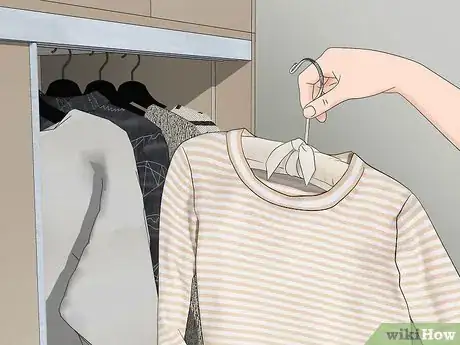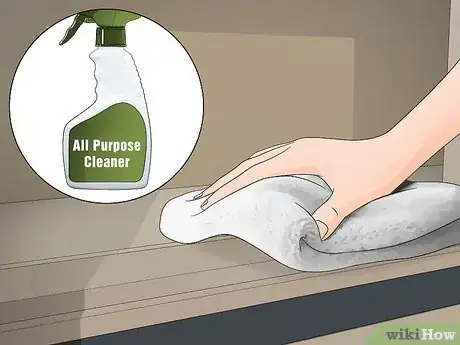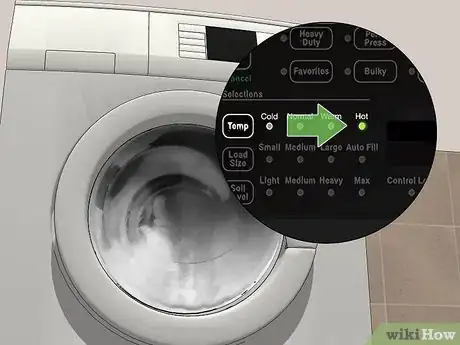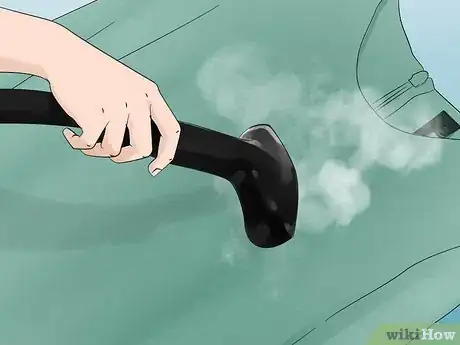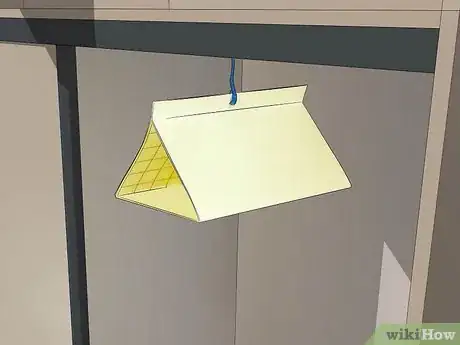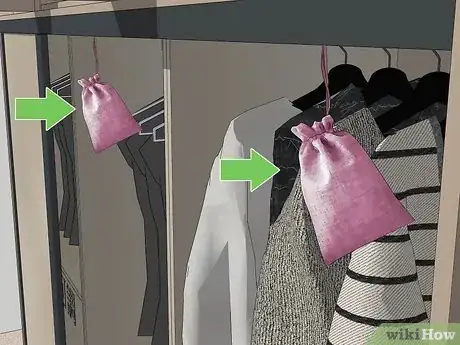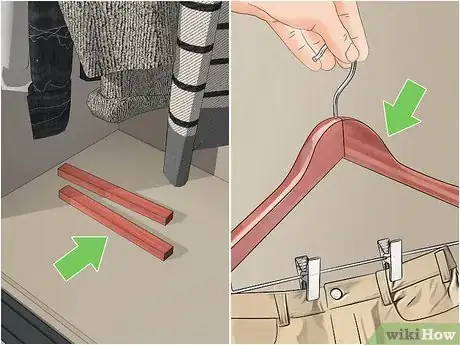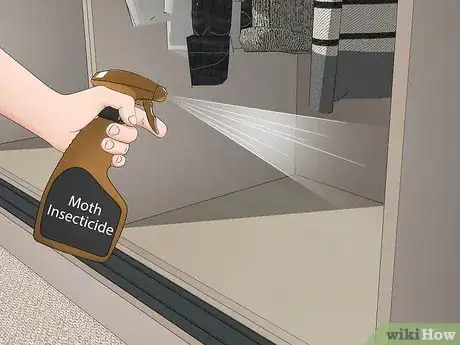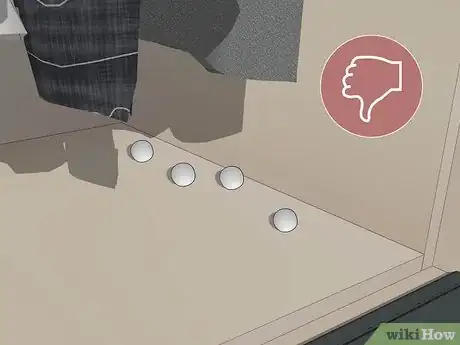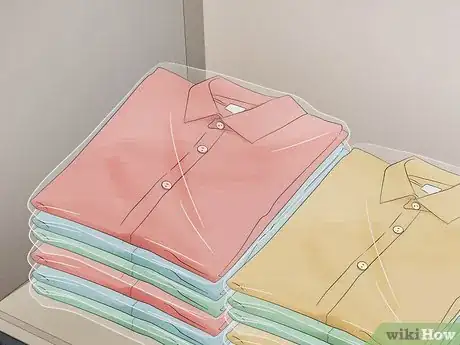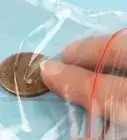This article was co-authored by Elmer Bensinger and by wikiHow staff writer, Madeleine Criglow. Elmer Bensinger is a Pest Control Specialist with Eden Advanced Pest Technologies in Spokane, Washington. With over 20 years of experience, Elmer specializes in integrated pest management and products such as insecticides and rodenticides. He studied business at South Puget Sound Community College.
There are 10 references cited in this article, which can be found at the bottom of the page.
This article has been viewed 7,886 times.
It's a perfect autumn morning and you've just reached for your favorite sweater only to discover that it's been eaten up by moths. This is super common, as the cool, dark environment of a closet makes it the perfect home for moths. Thankfully, there's a lot you can do to get rid of these pesky pests. This article is here to help you tackle the problem, including some tips on how to make sure the moths never return in the future.
Steps
Take everything out your closet.
-
Sort through everything before you start the cleaning process. First, remove all of your clothes from the closet. Separate the damaged clothing from the clothes that are still salvageable (if a sweater is severely moth-eaten with holes, you probably need to get rid of it). Throw the clothes you can't keep into a trash bag and dispose of them outside your house. Next, take out any remaining boxes and miscellaneous items so that the closet is completely empty.[1] X Research source
- It's a major bummer to have to throw out your damaged clothes, but it's the right call if they're too damaged to wear.
Vacuum your closet thoroughly.
-
This gets rid of moths and moth larvae on the floor and in crevices. First, vacuum the floor of your closet. Make sure to get every corner and crevice, as moths like to hide in these small spaces. If you have a dresser, vacuum the insides of each drawer to get any moths that might be hiding inside.[2] X Research source
- For the most effective approach, use a HEPA vacuum cleaner. Alternatively, put a HEPA filter in your standard vacuum. These can help you catch even smaller traces of the moths and their larvae.
- After vacuuming up your closet, throw away the vacuum bag outside of your home to make sure the moths don't return.
Deep clean your closet surfaces.
-
Use an all-purpose cleaner to remove remnants of the infestation. Apply an all-purpose cleaner to a clean cloth. Then, thoroughly wipe down the walls with the cloth. Make sure to wipe down the corners and crevices, all the shelves, and even the insides of your dresser drawers.[3] X Research source
Run washable clothes and linens through a hot water cycle.
-
High heat destroys moths and moth larvae. Wash your clothes in water that's 120 °F (49 °C) or above (this is usually the hottest cycle on your washing machine). Then, make sure the cycle runs for at least 30 minutes. Opt for this method to wash the bulk of your clothes affected by the infestation.[4] X Research source
- Make sure your clothes are machine washable before throwing them in the wash. If they aren't, opt for dry cleaning instead.
Freeze delicate clothing and accessories for 2-3 days.
-
The temperature kills moths and moth larvae on your clothes. Go for this method if your freezer gets to 18 °F (−8 °C) or lower, as that's the temperature necessary for freezing to work. Choose items like purses and accessories for this method, as these are things you can't usually wash or take to the dry cleaners.[5] X Research source Before sticking them in the freezer, tuck the items in plastic bags and keep them airtight. Then, keep them in the freezer for 2-3 days.[6] X Research source
- Let the clothes defrost before you take them out of the bag. Then, wash them on their usual cycle.
Steam or iron clothing to kill moths.
-
The heat will kill moths and larvae. First, check your clothes' labels to make sure that each item is safe to steam or iron. Next, lay out your clothes on an ironing board and steam your clothes on a heat setting above 120 °F (49 °C).[7] X Research source Let your clothes dry and then hang them up again in your closet.[8] X Research source
- If you don't have a steamer, try ironing them on a heat setting above 120 °F (49 °C) instead.[9] X Research source
Take coats and special garments to a dry cleaner.
-
Dry cleaning fluid kills larvae on clothes that aren't machine washable. Bring your remaining clothes to a dry cleaner nearby and put the problem behind you. When you're there, be sure to let the dry cleaner know that your clothes were infested with moths. That way, they can keep your clothes separate from the others.[10] X Research source
Put moth traps in your closet to confirm the moths are gone.
-
These can help you determine if there's still an infestation. Purchase pheromone traps that attract webbing clothes moths online or at your local home improvement store. Though these won't necessarily get rid of the infestation, they can help you check how many moths are still present. After your initial cleanup efforts, place a few traps in your closet.[11] X Research source
Deter moths with lavender sachets and lavender oil.
-
Moths are repelled by the smell of lavender. Lavender contains insecticidal properties, which deters moths in the same way a mothball might (without the harmful pesticides).[12] X Research source To prevent moths from returning, place 2-3 dried lavender sachets in your closet. Alternatively, use lavender essential oil by squeezing 2-3 drops on a linen cloth. Hang the cloth near your clothes to keep moths away.[13] X Research source
- Purchase lavender sachets and lavender essential oil online or at a local natural grocery store.
- Avoid getting the lavender oil on your clothes, as lavender oil has the potential to stain.
Use cedarwood to repel the moths.
-
The smell of cedarwood will keep moths far away. Try placing a cedarwood block in your closet. You might also try hanging your clothes on cedar hangers, storing a cedar box in your closet, or even placing a few cedar balls in your closet.[14] X Research source
- The smell of cedar fades over time. To keep the scent strong so that moths don't return, sand down your cedar block every few months with sandpaper. If you're using cedar balls, replace them with new ones when their scent starts to fade.
Spray moth insecticide on surfaces.
-
Try out this method if natural solutions don't work. Go for a moth insecticide that contains pyrethrin, as this ingredient is super effective. Before spraying it throughout your closet, spot test the spray on a piece of clothing to make sure it won't harm your clothes. If you don't notice any damage, spray the insecticide according to the instructions on the label.[15] X Research source
- Purchase moth insecticides online, at a home improvement store, or at the garden center of your local grocery store.
Avoid using mothballs in your closet.
-
Mothballs contain harmful pesticides that aren't safe for people or animals. Though mothballs may have been a fail-safe in the past, their strong scent and toxic ingredients make them a less than ideal choice. Ingredients like 1,4-dichlorobenzene are toxic and dangerous for children and pets to breathe in.[16] X Research source If you can, go for natural remedies or alternative insecticides to get rid of moths instead.[17] X Research source
Store clothes properly to avoid another infestation.
-
Protect items in air-tight containers and clean your closet regularly. To keep your clothes safe from any further damage, store them in vacuum-sealed bags and airtight containers. Reduce clutter by getting rid of any clothes you don't want or need anymore (this will give the moths fewer places to hide). Finally, deep clean your closet every couple of weeks. As you clean, check for any signs of moths on the surfaces of your closet and on your clothes.[18] X Research source
Call a professional if the moths still won’t go away.
-
You can do this as a last resort. Moth infestations can usually be handled with at-home remedies. If you've tried out these solutions and still notice moths in your closet, or holes in your favorite sweaters, set up an appointment with a professional exterminator in your area. They can assess the infestation and help you get it under control.
You Might Also Like
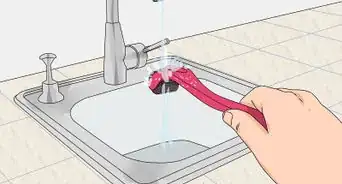



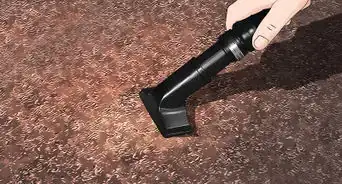
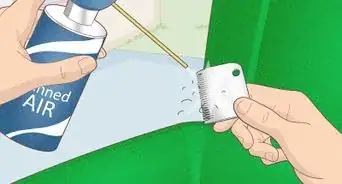 10+ Ways to Clean Your Clipper Blades like a Pro Barber
10+ Ways to Clean Your Clipper Blades like a Pro Barber

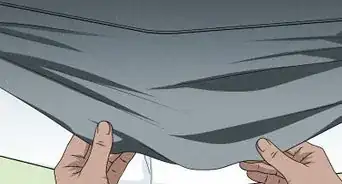 How to Clean Dog Pee from a Mattress
How to Clean Dog Pee from a Mattress

References
- ↑ http://ipm.ucanr.edu/PMG/PESTNOTES/pn7435.html
- ↑ https://extension.oregonstate.edu/news/there-are-alternatives-dangers-mothballs
- ↑ http://ipm.ucanr.edu/PMG/PESTNOTES/pn7435.html
- ↑ http://ipm.ucanr.edu/PMG/PESTNOTES/pn7435.html
- ↑ http://ipm.ucanr.edu/PMG/PESTNOTES/pn7435.html
- ↑ https://www.pesticide.org/moths_clothes
- ↑ http://ipm.ucanr.edu/PMG/PESTNOTES/pn7435.html
- ↑ https://pestrepublic.com/does-steaming-clothes-kill-moths/
- ↑ https://www.apartmenttherapy.com/how-to-prevent-get-rid-of-fabr-109733
- ↑ https://www.seattletimes.com/explore/at-home/moths-have-been-partying-in-your-dark-closet-what-now/
- ↑ https://www.pesticide.org/moths_clothes
- ↑ https://www.compoundchem.com/2017/07/10/lavender/
- ↑ https://www.cubesmart.com/blog/your-space/cleaning/how-to-get-rid-of-clothes-moths/
- ↑ https://www.apartmenttherapy.com/how-to-prevent-get-rid-of-fabr-109733
- ↑ http://ipm.ucanr.edu/PMG/PESTNOTES/pn7435.html
- ↑ http://ipm.ucanr.edu/PMG/PESTNOTES/pn7435.html
- ↑ https://www.abc.net.au/news/2018-02-17/how-to-deal-with-clothes-and-pantry-moths-in-your-home/9425618
- ↑ https://www.theguardian.com/environment/2019/aug/19/revenge-of-the-clothes-moths-as-numbers-boom-can-they-be-stopped
About This Article

